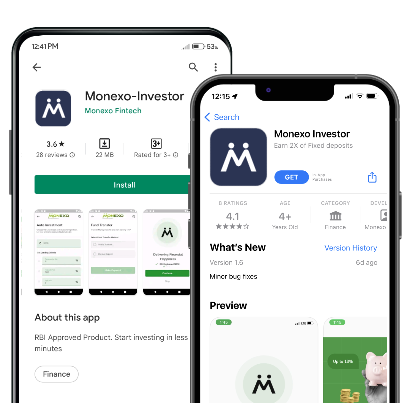Discover the opportunity for NRIs to seamlessly invest through Monexo’s P2P lending platform in India. Explore the benefits, regulations, and considerations for NRI investors looking to participate in the dynamic world of peer-to-peer lending. Learn how NRIs can diversify their investment portfolio and generate returns through secure and transparent P2P lending platforms. Start your journey towards international financial inclusion and explore the options available for NRIs to invest in P2P lending with confidence.
Are you aware of the investment opportunities available for Non-Resident Indians (NRIs) in the Indian market? According to the Ministry of External Affairs, there are approximately 13.4 million NRIs residing outside India, presenting a significant demographic. The Indian government has streamlined the investment process for NRIs, allowing them to diversify their global portfolios.
The regulations and restrictions on NRI investments may vary depending on your present country of residence. Prior to making any investments in your home country, it is imperative to thoroughly understand and comply with all relevant laws and regulations.
What is P2P Lending?
The Reserve Bank of India (RBI) regulates peer-to-peer lending as an innovative debt financing mechanism that enables borrowers and lenders to lend and borrow money without involving financial institutions. P2P lending is an online platform, which often has lower overhead expenses compared to traditional banks or financial institutions. Consequently, lenders have the opportunity to achieve higher returns, and borrowers can access funds at lower interest rates.
Who should consider P2P lending?
The lack of established credit scores among a sizable Indian population opens the door to P2P lending outside of the regular banking sector. Furthermore, the returns on classic investment products such as fixed deposits are declining. This trend is positioning loan investments as a viable business alternative, offering potential annual returns of up to 13% over a five-year period. As a result, microfinance investment benefits both the investor and the borrower.
Limits on traditional investment options for NRIs
Under FEMA regulations, NRIs from certain countries like the United States and Canada are not allowed to make mutual fund investments. The acquisition and sale of direct shares are limited to a pre-approved list of stocks, with no intra-day or short-selling activities allowed. While regulations allow non-resident Indians (NRIs) to invest in real estate, the purchase of farms is restricted.
P2P lending, on the other hand, provides a better investment alternative because you can invest through any RBI-registered platform like Monexo and lend to any borrower of your choice, based on your risk and return requirements.
Steps to Invest in P2P Lending as an NRI
For NRIs investing in P2P lending with Monexo is a straightforward process comprising three steps:
- Register in India using your cellphone number.
- Provide the necessary KYC documents.
- Begin constructing your investment portfolio.
EMIs, encompassing both the original lending amount and interest returns, are automatically debited from your bank account and transferred to an Escrow account.
While NRIs have various investment options, integrating P2P lending into their portfolio can enhance overall returns and provide diversification.
It’s no surprise that peer-to-peer lending is quickly becoming a favorite alternative investment choice for NRIs around the world.
Bottom Line:
The Indian financial sector has evolved rapidly in recent years, beginning with the increased adoption of the digital payments environment, which has been accelerated by the Covid-19 pandemic. The natural process led digital payment platforms, to diversify into a variety of financial services, including investing.
Although real estate was the preferred investment for NRIs, the recent price decline has reduced returns. Falling interest rates have also resulted in a drop in NRI bank deposits. Due to market volatility, equities and mutual funds have not produced the projected results. All of these and other issues have prompted the NRI population to seek alternate investment opportunities in India.
With the RBI’s monitoring standards in place since 2017, P2P lending has progressively acquired acceptance among both investors and borrowers. Our alternative to the traditional banking model is still making progress, no matter how small or large. However, like any emerging concept, P2P lending was surrounded by various myths that have since been debunked with the revelation of truths.




